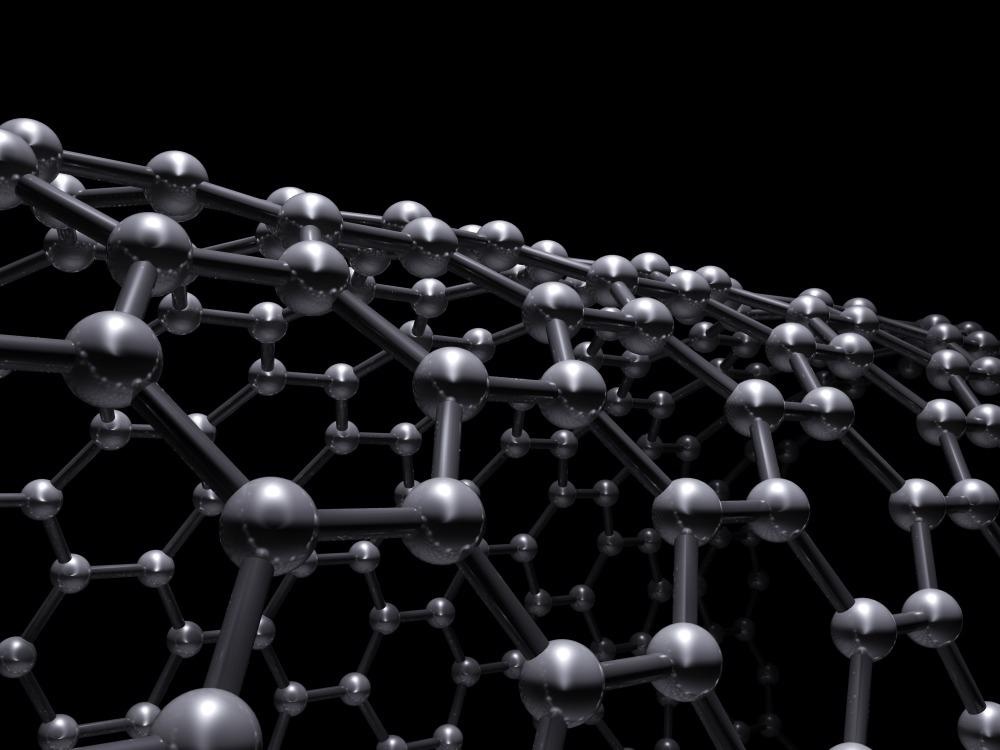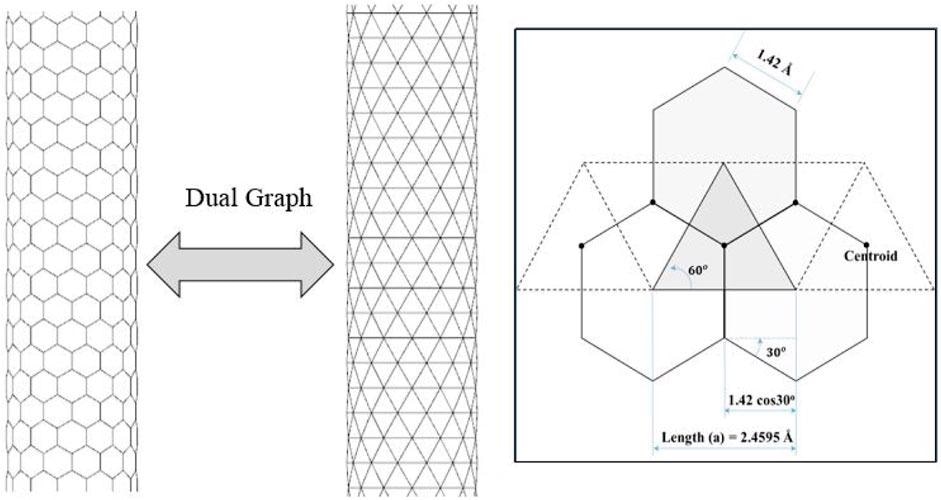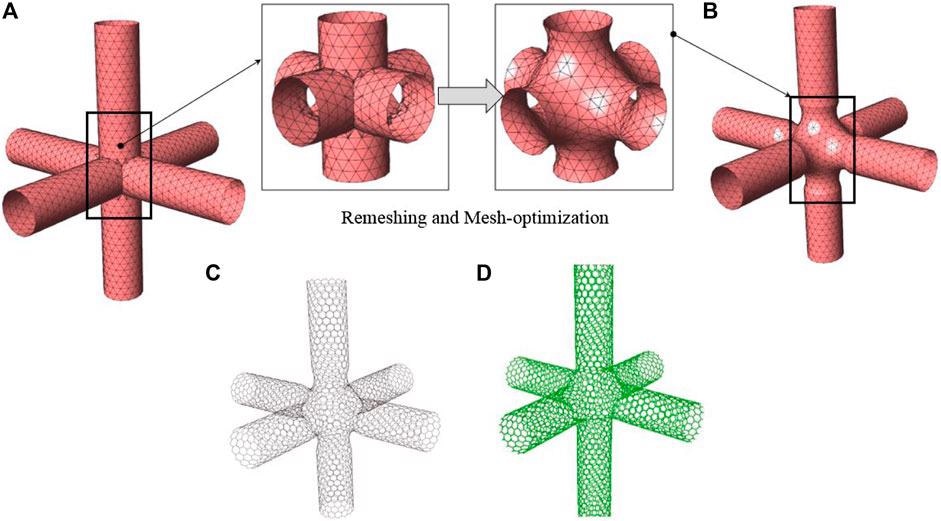In a study published in the journal Frontiers in Materials, computation procedures based on novel Computer-Aided Design (CAD) optimization algorithms and remeshing methods were described for topologically accurate and valid modeling of complicated multi-terminal nodes (referred to as 3-, 4-, and 6- nodes).

Study: Multi-Terminal Nanotube Junctions: Modeling and Structure-Property Relationship. Image Credit: Evannovostro/Shutterstock.com
Carbon Nanotube Nodes
Nanomaterials such as graphene, nanotubes, and carbon fibers which are all based on carbon offer superior electric, thermal, and mechanical capabilities while being incredibly lightweight, making these materials suitable for system designing and operations on the nanoscale.
Carbon nanotubes (CNTs) are well-known for their excellent heat conduction, compressive strength, elasticity, and size distribution due to their tubular honeycomb architectures composed of atomic Carbon bound in sp2 hybridization. They've been utilized to make nanoscale electrical equipment, composites, and cooling fins.
They are frequently found as linking connections of diverse qualities in three-dimensional structural formations based on CNTs. These nodes exhibit intriguing qualities that distinguish them from pure CNTs and are useful for the construction of nanoscale foundations with tunable thermal, mechanical, and electric features.
The structure-property link of these nodes has piqued researchers' attention as it influences the macroscopic properties of developed composites and materials. Computations and mathematical investigations can assist composite fabrication experts on the best techniques to adopt for the node manufacturing requirements in order to achieve the requisite qualities.

Modeling of CNT Nodes
The first stage in the computational analysis is to create topologically precise atomic-level reconstructions of CNT nodes. When two CNTs are joined at the ends with a singular septagon-pentagon pair of imperfections, the simplest conceivable connection, a dual terminal (2T-) node can be formed. Based on the chirality of the coupled CNTs, 2T-nodes may be classified as metal/metal, semiconductor/metal, or semiconductor/semiconductor. But since they only have two terminals, 2T-nodes are far less versatile than multi-terminal systems, particularly in electrical applications, where the third terminal may be utilized for power gain, switching, or current modulation features, as in nanoscale transistors.

Bond surplus and the associated defects in the polyhedron nanostructures. © Nakarmi, S., Unnikrishnan, V. U., Varshney, V., & Roy, A. K. (2021).
Which Computational Approach is Best-Suited for Studying Structure-Property Interplay?
A variety of methodologies, primarily molecular dynamics (MD) computations, have been used to build atomic-level models and examine structure-property interplay in the situation of multi-terminal nodes. In addition, 3T- and 4T-nodes were created using self-assembly graphene nanoscale ribbons and tight binding molecular dynamics (TBMD) computations.
MD simulations impose high computational costs because they need the system to be maintained for an extended period of time. Furthermore, employing MD simulations to create complicated nanostructures such as 6T-nodes and nanotube frameworks is exceedingly challenging.
A CAD-based mesh optimizing technique, in which triangular meshes of a larger hexagonal mesh referred to as 'primal' meshes are formed initially, is an alternate way of producing CNT nodes.
This technology allows for the generation of topologically precise simulation models of up to six terminal (6T)-nodes, which may then be utilized as foundations to create intricate nanostructures with preferred mechanical and thermal properties. This approach is readily adaptable to further complicated nodes, such as multiple CNTs joining at arbitrary angles on a single junction.
MD computations were used to describe the structure-property interplay of the developed node models. The article investigated two essential qualities, namely heat conduction and mechanical strength, and their connection with node architecture.
The heat conduction of the nanomaterials was evaluated using a heat bath technique, while the tension and compression strengths were assessed using typical procedures for tension and compression testing.

Procedure for constructing orthogonal 6T-Junction. (A) Dual triangular mesh of (16,0) nanotubes with six directly connected arms. The inset images are before and after snapshots of remeshing and mesh optimization procedures. (B) Regular triangular mesh with mesh length 2.45 Å. (C) Dual graph of the regular triangular mesh with each vertex representing position of carbon atoms. (D) Atomistic model of 6T-Junction after molecular minimization (MM). © Nakarmi, S., Unnikrishnan, V. U., Varshney, V., & Roy, A. K. (2021).
Important Findings of the Research
In this study, the existence and extent of non-hexagonal imperfections were found to be responsible for a considerable drop in the mechanical strength and heat conduction of the CNT nodes compared to pure nanostructures.
These flaws generate a gap in the thermal profile near the node, which increases the dispersion of phonons and reduces heat conduction. Similarly, excessive stress accumulation in the flaws was discovered to be the primary cause of localized fracture, resulting in a reduction in the mechanical strength of merged nanostructures.
The team predicts that altering the defect density (form and quantity of non-hexagonal rings) and their alignment (relative CNT orientation) in multi-terminal CNT junctions could be utilized to fine-tune the cumulative heat transfer capacity and mechanical strengths of three-dimensional carbon nanostructures such as CNT-based high porosity foams, nanofiber reinforced composites and ultra-light mechanical dampers.
Continue reading: How Can Printable Silicon Nanocomposites Improve Metalenses?
Reference
Nakarmi, S., Unnikrishnan, V. U., Varshney, V., & Roy, A. K. (2021). Multi-Terminal Nanotube Junctions: Modeling and Structure-Property Relationship. Frontiers in Materials. Available at: https://www.frontiersin.org/articles/10.3389/fmats.2021.692988/full
Disclaimer: The views expressed here are those of the author expressed in their private capacity and do not necessarily represent the views of AZoM.com Limited T/A AZoNetwork the owner and operator of this website. This disclaimer forms part of the Terms and conditions of use of this website.